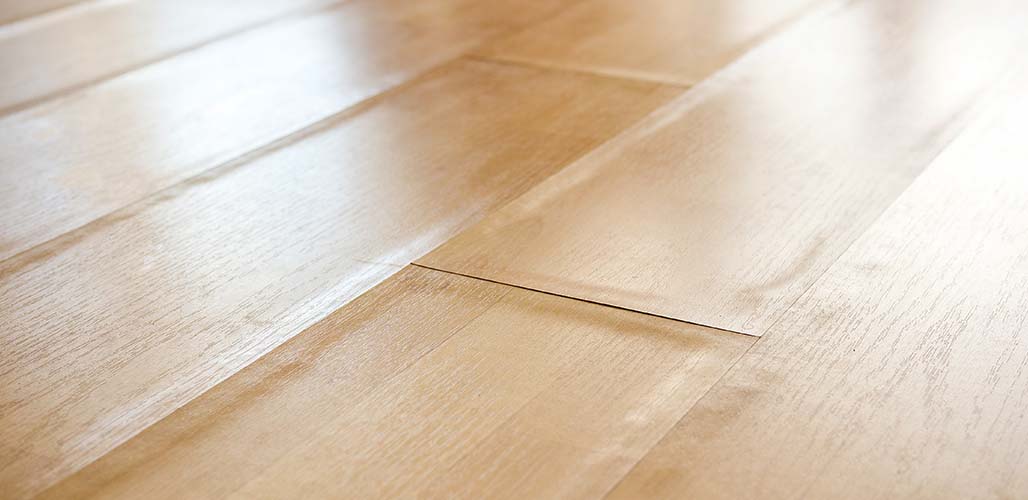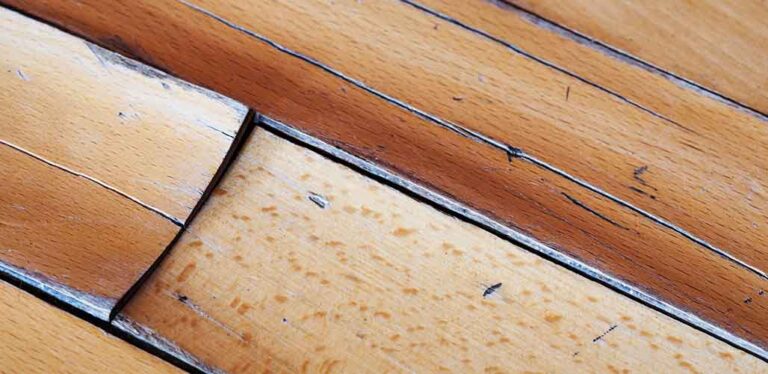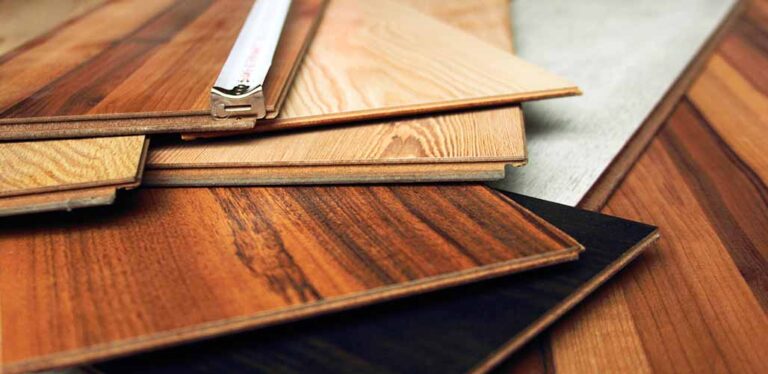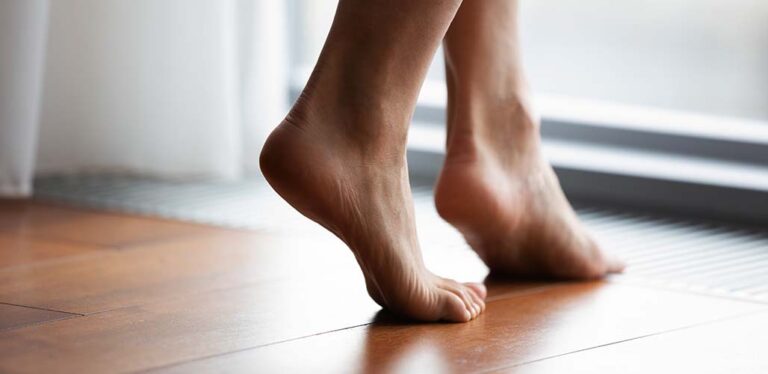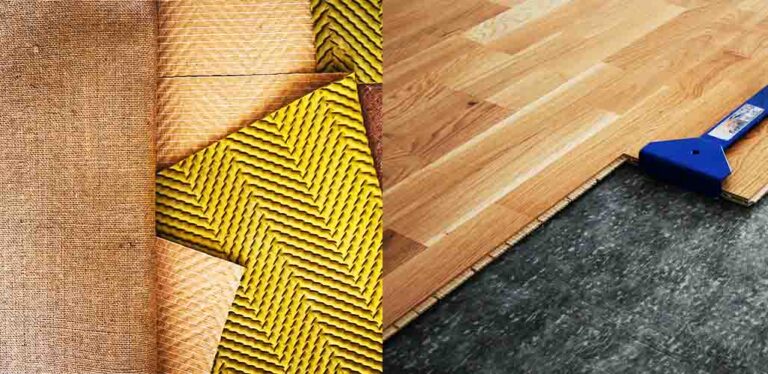Why Does Laminate Flooring Bubble?
Like plenty of other people, I’m drawn to the idea of laminate as an affordable and durable way to smarten up the floors in my home. But why does laminate flooring bubble sometimes? I’ve learned that bubbling laminate is usually due to poor installation, or moisture. So now I know how to avoid it, and I’m going to fill you in on everything you need to know too!
Contents
Why Does Laminate Flooring Bubble?
Laminate floors are a hugely popular option, for home owners on high budgets and low budgets alike. They are:
- available in a huge array of colors, textures and styles
- sold at a wide range of price points to suit every budget
- easy to install
- easy to maintain
- durable and long lasting.
Despite all this, bubbles and air pockets can form under laminate floors, causing an unsightly appearance. Left untreated, the bubbles can crack, making the problem even worse. Laminate flooring bubbles are a sign of being incorrectly fitted, or subject to prolonged exposure to moisture, amongst other reasons. Establishing the cause is the first step to stopping the bubbling, fixing the affected areas, and preventing recurrence.
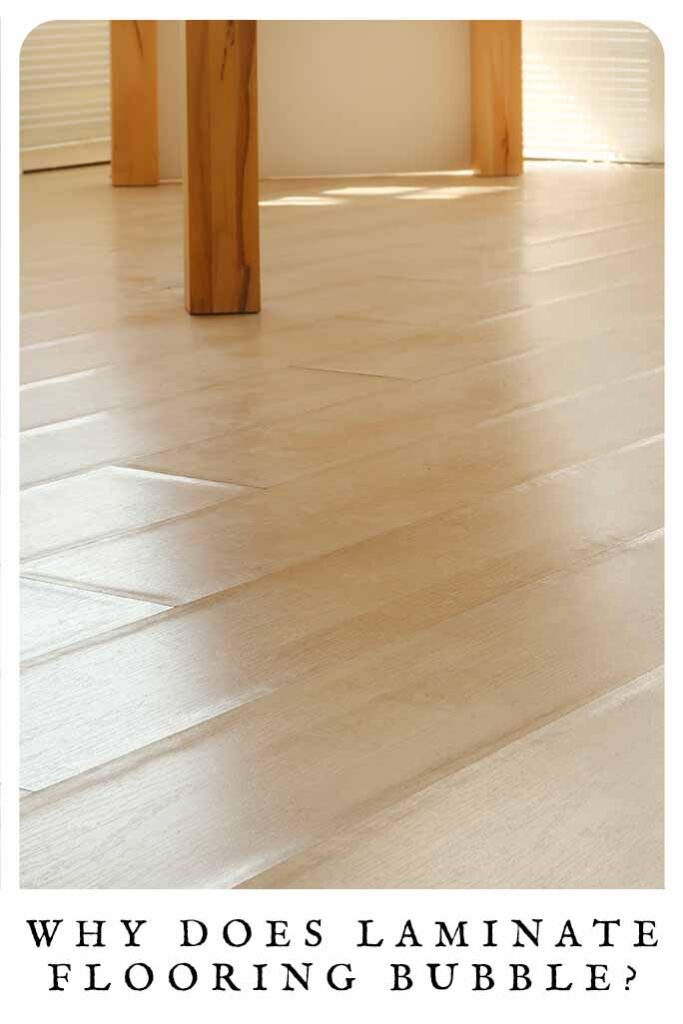
Common Causes of Bubbles on Laminate Floors
The common causes of bubbles under laminate floors are:
- Poor installation
- Inadequate expansion joints
- Untended spills
- Plumbing leaks
- Subfloor moisture problems
- Unsuitable cleaning methods
Poor Installation
Laminate floors are a type of floating floor. This means that the sections interlock with each other, but they are not secured to the subfloor below them or the walls around them. If the floor is uneven, or an inadequate underlayment is used, it can create the impression of hollow, bouncy areas in the floor, like bubbles.
If laminate floors are secured to the floor, or a partition wall is constructed and sealed to the floor at a later date, then it can cause the floor to buckle and bubble. This is because they need to expand in warm or humid conditions, and being fixed to an immovable surface stops them expanding sideways – so they get pushed upwards instead.
Finally, if the boards are not properly installed, it increases the risk of water penetrating the boards through gaps. Water will stay under the flooring and begin to cause moisture problems, which we’ll come back to in a minute.
Inadequate Expansion Joints
This falls within the category of ‘poor installation causes’, but it’s such a significant one it deserves its own heading! Laminate floors need to expand and contract as the temperature or ambient humidity changes. When it is hot or humid, the boards expand. When conditions cool down or dry out, they shrink again.
To allow for this, laminate floors should be installed with an expansion joint where they meet the wall. ‘Expansion joint’ is a bit of a misnomer, since the wall and laminate specifically aren’t joined to one another at all! In fact, the expansion joint is a gap, of at least half an inch, between the edge of the laminate and the wall. This gap is concealed by the baseboards, which shouldn’t be stuck to the floor in any way. If the expansion joint isn’t big enough, the floor will expand to fill the gap, and further expansion will put it under tension until it buckles up somewhere in the middle instead.
Ignoring Spills
Now let’s move onto all the wet causes of laminate floor bubbles, starting with spills. Spills will not harm your laminate floor easily if you spot clean them right away. Properly installed laminate floors have a continuous topcoat that protects them against various forms of damage. It would take quite a while for spills to affect a laminate board. But when they happen frequently or they’re left to stand, then they could cause bubbles to form. This is because the moisture causes the boards to swell, and pop up.
Plumbing Leaks
In bathrooms and kitchens, leaky plumbing can cause moisture under the floor that leads to bubbles. A particular problem is a pipe under a bath or sink which gradually soaks the laminate over a long period of time. The damage might not become apparent until the bubbling spreads under the bath panel or unit concealing the pipework.
Subfloor Moisture Problems
Subfloors and laminate flooring should always be separated by a moisture barrier or waterproof underlayment. If the underlayment is porous, moisture in the subfloor can be absorbed by the laminate, causing it to swell and buckle.
Unsuitable Cleaning Methods
Every type of floor requires a specific way of cleaning. What works for tile floors does not always work on laminate floors. For example, you should not steam clean a laminate floor, or mop it without also drying it right away. The moisture can cause the laminate to swell, and (you guessed it) buckle, causing bubbles.
Can You Fix Laminate Floor Bubbles?
Whether it’s possible to fix bubbles in laminate floors depends on
- their location,
- how they were caused,
- and how long they have been there.
For example, bubbles at the edge of a room caused by snagging spots in the expansion joint (eg. due to a wall stud) are easier to fix than bubbles in the middle of a room caused by letting lots of water stand there after mopping. And in relatively old bubbles, the laminate boards can end up permanently warped out of shape. If the bubble can’t be fixed, the only alternative is to replace that section of the floor.
That said, it’s always worth trying to fix the problem first, before you start uninstalling and relaying sections of floor! You can try fixing bubbles in laminate flooring by removing the cause. Drying out a section of floor which has always been a bit damp might be enough to make it shrink back into place. If there is no obvious problem with moisture, remove the baseboards to check the expansion joint (let’s face it, you’ll need to remove them to replace the floor anyway). You can fix a too-small expansion joint by trimming the edges of the floor.
How to Avoid Bubbles on Laminate Flooring
Preventing bubbles on laminate flooring starts with proper installation. While it may be too late for that, and reinstallation comes with a hefty price tag, two practices will still help prevent bubbles on your existing laminate floor:
- Keep your floor dry.
- Use a dehumidifier.
Keep the Laminate Floor Dry
Always dry the floor immediately after a spill or after mopping. Water that stands on the floor for too long will have enough time to penetrate the boards and cause bubbles later. When the laminate floor gets frequent exposure to moisture, mold may also develop.
Use a Dehumidifier
If you live in a humid region, use a dehumidifier to balance the moisture levels at home. The recommended ambient humidity for our homes is between 30% and 50%, according to the Environmental Protection Agency.
Why Does Laminate Flooring Bubble? Summary?
Laminate flooring that develops bubbles indicates mistakes in the installation, or moisture problems. For a permanent fix, it is a must to identify and address the main cause of the problem first. Some causes are easier to fix than others, and as always, prevention is better than cure!
Are You Having Trouble With Your Laminates?
Let us know if you work out what’s causing it using the comments box down below.
More Help With Laminate Flooring
- More on buckling in laminate floors
- Why do gaps open up in laminate floors?
- Can you get away without an underlayment?
- What makes laminate flooring creak?

